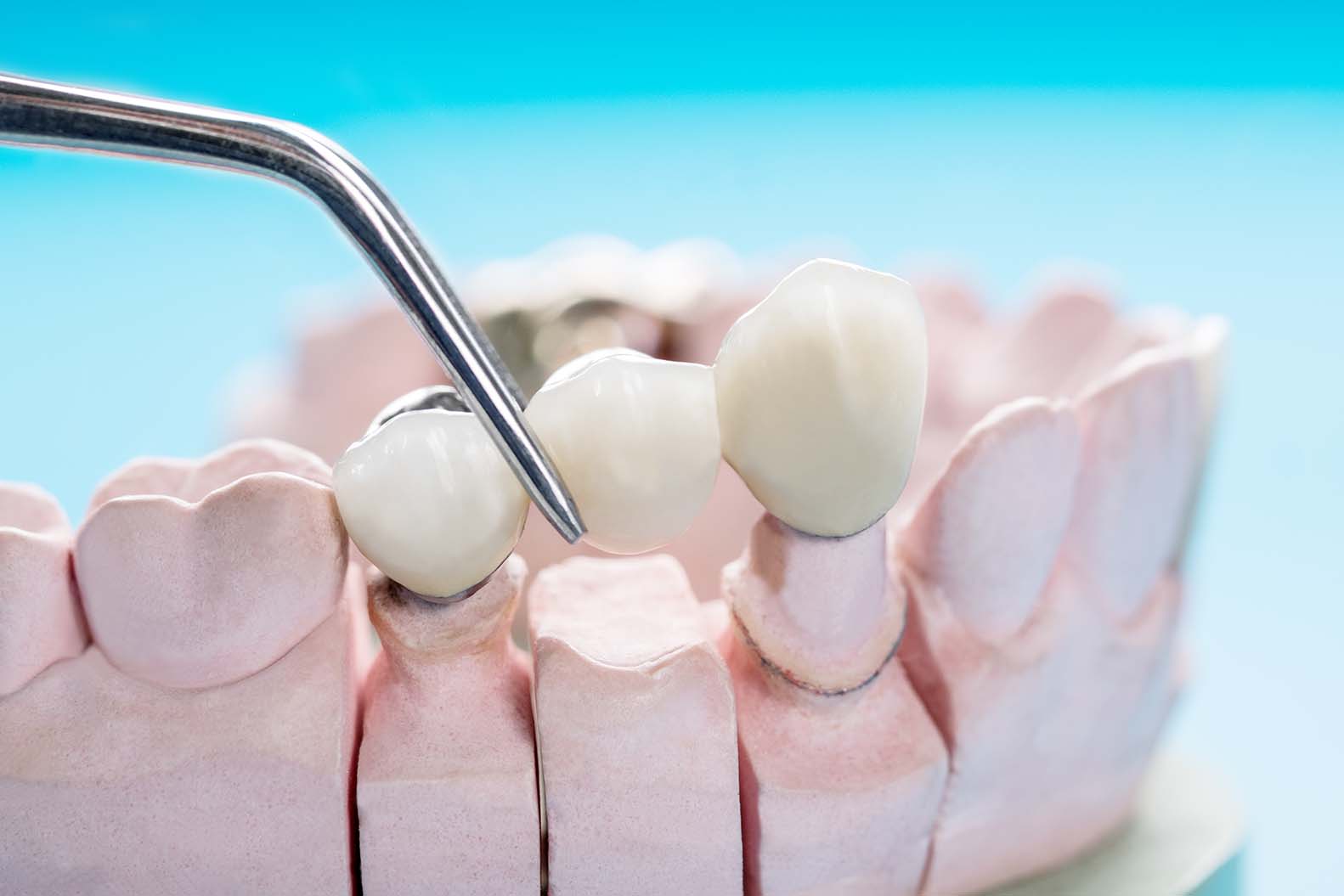In this all-encompassing guide, we’ll delve into the world of dental crowns and bridges, covering their benefits, the procedure, aftercare, and much more. Join us as we unravel the secrets to a healthier, more radiant smile with dental crowns and bridges!
Understanding Dental Crowns and Bridges
Dental Crowns: A dental crown, also known as a cap, is a custom-made restoration that covers a damaged or decayed tooth, restoring its shape, size, strength, and appearance. Crowns can be made from various materials, including porcelain, ceramic, metal, or a combination of these, and are cemented onto the prepared tooth to provide long-lasting support and protection.
Dental Bridges: A dental bridge is a fixed dental restoration used to replace one or more missing teeth by bridging the gap between the remaining natural teeth. The bridge consists of artificial teeth, known as pontics, which are anchored in place by dental crowns on the adjacent natural teeth or dental implants.
Benefits of Dental Crowns and Bridges
Restored Functionality: Dental crowns and bridges can restore the functionality of your teeth, allowing you to bite, chew, and speak with ease.
Aesthetic Enhancement: Both crowns and bridges are designed to blend seamlessly with your natural teeth, enhancing the appearance of your smile and restoring your confidence.
Preservation of Oral Health: By replacing or repairing damaged teeth, crowns and bridges help maintain proper alignment, prevent shifting of adjacent teeth, and promote overall oral health.
The Procedure
The process of receiving dental crowns and bridges typically involves the following steps:
Consultation and Examination: Your dentist will perform a comprehensive oral examination, including X-rays, to assess the condition of your teeth and determine the appropriate treatment plan.
Tooth Preparation: For dental crowns, the affected tooth is prepared by removing a portion of its outer structure to accommodate the crown. In the case of bridges, the adjacent teeth are prepared to support the bridge.
Impression: An impression of the prepared teeth is taken to ensure the custom-fit of the crowns or bridges.
Temporary Restorations: While your permanent crowns or bridges are being fabricated, temporary restorations may be placed to protect the prepared teeth.
Placement: Once the custom crowns or bridges are ready, they are meticulously placed, adjusted, and cemented into position for a secure and comfortable fit.
Aftercare
After receiving dental crowns and bridges, it’s essential to maintain optimal oral hygiene and follow these aftercare guidelines to extend the longevity of your restorations:
Oral Hygiene: Brushing and flossing regularly, as well as using antimicrobial mouthwash, can help prevent decay and gum disease around the crown or bridge.
Dental Visits: Schedule regular dental check-ups for professional cleanings and examinations to ensure that your crowns and bridges are in good condition.
Dietary Considerations: Avoid chewing hard foods, ice, or sticky substances that can potentially damage the crowns or cause the bridge to come loose.
Mouth Protection: If you participate in contact sports, consider using a mouthguard to protect your dental restorations from potential trauma.
Conclusion
Dental crowns and bridges offer a proven and effective solution for addressing damaged or missing teeth, restoring both functionality and aesthetics to your smile. By understanding the benefits, procedure, and aftercare of crowns and bridges, you can make informed decisions about your dental health. If you’re considering these restorative treatments, consult with a qualified dental professional to explore your options and create a tailored treatment plan that meets your unique needs.
We hope this guide has provided valuable insights into the world of dental crowns and bridges. If you have further questions or are interested in scheduling a dental consultation, we’re here to assist you. Your journey to a healthier, more confident smile begins with the right information and professional guidance.

